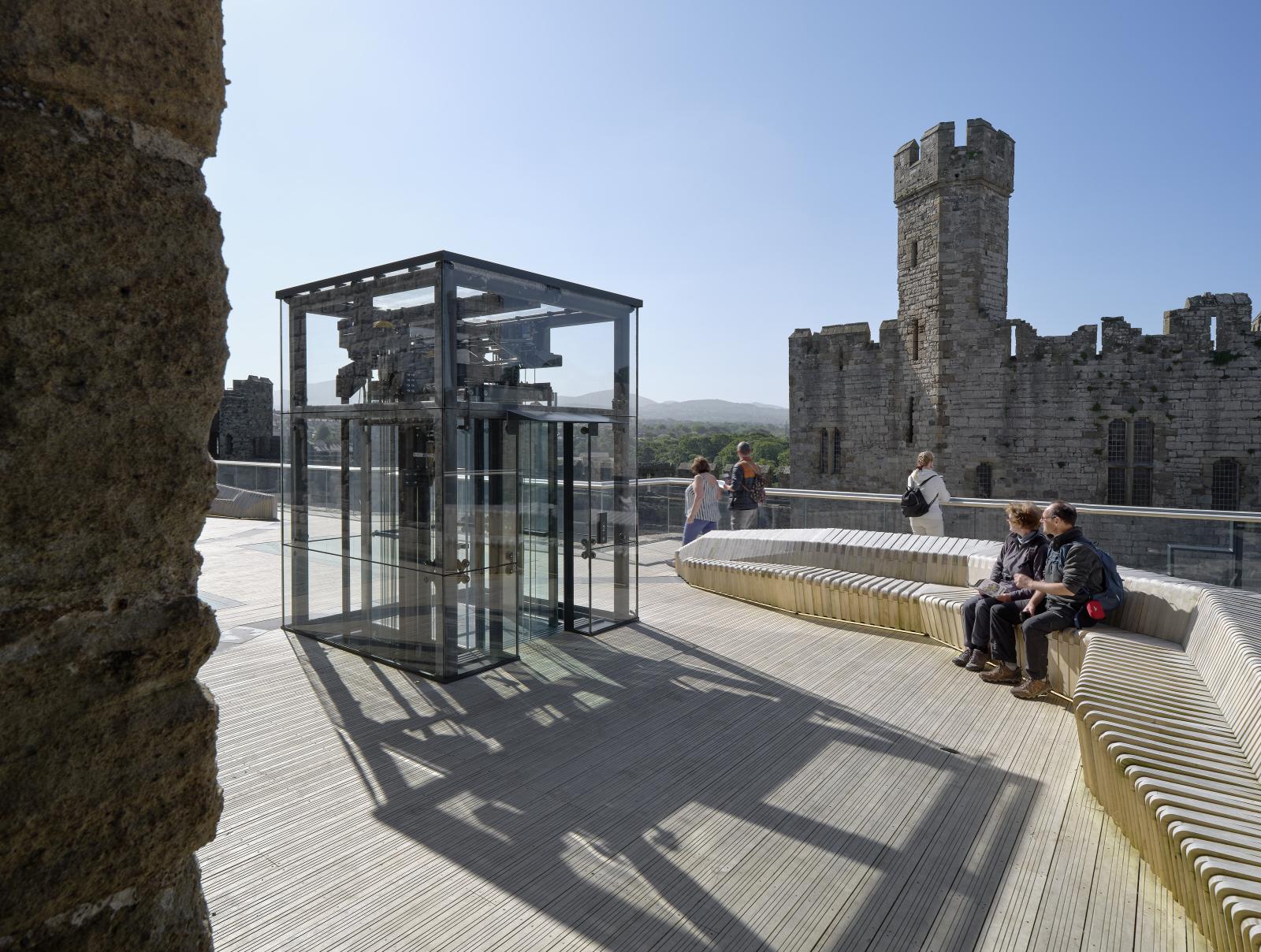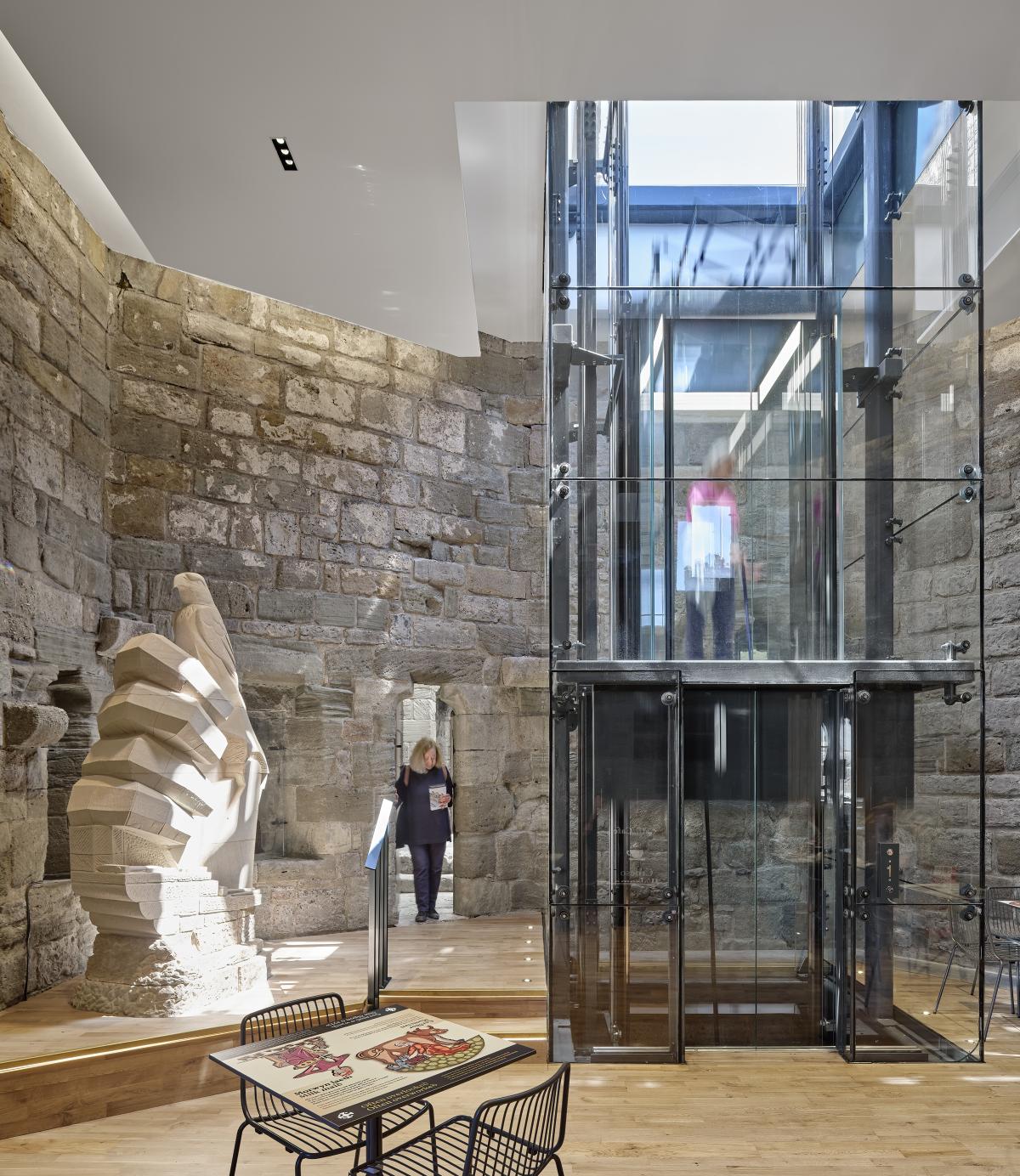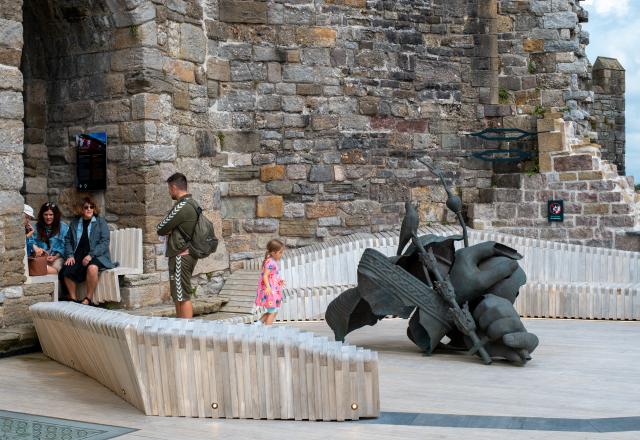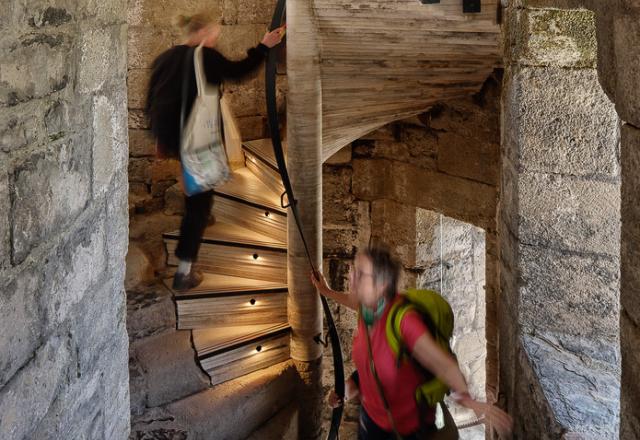
Accessibility has always been the focal point of our work at Caernarfon – and the newly installed glass lift is a highlight of our intervention work. Providing access to all visitors to the upper battlements of the King's Gate was a unique and interesting challenge we were excited to take on.
The lift now provides easier vertical access within the castle that would have been previously implausible. The drive from Cadw to encourage even more people with a diverse set of needs to visit and experience the castle meant that the facilities needed to be in place to support this. The lift is an integral part of this, along with the provision of accessible WCs and a changing places facility within the castle walls.
Positioning
The positioning of the lift was a key part of the design process. There needed to be a balance between providing the most access whilst being the least impactful to the site as possible and reducing the amount of interaction with the historic fabric. There are three towers within the project, offering a variety of positions and locations, so several factors had to be taken into account: getting services to towers, limitations of access, and architectural features of the existing castle.
The west tower was chosen as the location best suited for both the access and visual impact on the top deck. Then, the position within the space needed to be considered; we decided on what was essentially the clearest wall from the ground up to the second floor which wouldn’t obstruct any existing architectural features and would allow the lift to sit comfortably in the space. Full visual assessments were carried out from the other towers at Caernarfon to measure the impact of the new structure, as well as the views from the town outside.

Design
There were no set design precedents for the lift at Caernarfon, starting with the backdrop of a medieval tower we were introducing a modern structure that needed to be reversible and clearly contemporary. A simple material palette and design language was introduced across the project so that each intervention could have its own identity whilst still being a part of the collective design. In this case, we utilised steel and glass to create a bespoke panoramic lift.
The overall ethos of the project was to not shy away from celebrating the new architecture as clearly modern interventions that reflected the grandeur of the castle in a contemporary way. We didn't want to hide the lift, so glass is heavily utilised to allow visitors to still read the stonework through it and experience the space as a medieval octagonal form.

Structure
The steelwork in the lift isn’t fixed to any existing stonework, maintaining a level of protection of the historic fabric, and instead is supported by new steelwork within the floors. This ensures that the lift is completely reversible and physically separate from the castle. The structural steel frame is made up of a series of ring beams at each floor level and the head of the doors – reducing the amount of structure on show.
Details
The material palette of the lift supports the need for simple, clean and modern lines that contrast with the medieval stone. Low iron glass was selected to reduce the green tint and allow the glass to be as transparent as possible.
Throughout the entire project, metalwork was selected in a strong green/grey tone to complement the masonry rather than disappear in it; this included the fixtures, fittings and structure within the lift. The simple perimeter lighting to the floor and ceiling also highlights the lift’s modern structure. It was important in our design process to emphasise that the lift itself is a contemporary insertion in the castle that should be celebrated rather than concealed. Alongside the engineers, we pushed to create something different to achieve the visual aesthetics of the lift. The lift shaft is only enclosed with glass on three sides, with the stone wall of the castle forming the back.
© Daniel Hopkinson
In detail - The glass balustrades at Caernarfon
The King's Gate project at Caernarfon Castle is a series of design interventions to the World Heritage Site. As part of a short series, we look at the bespoke design details with a shared palette of materials and finishes that have helped shape the project.
In detail - The hands that built the castle at Caernarfon Castle
The King's Gate project at Caernarfon Castle is a series of design interventions to the World Heritage site. As part of a short series, we look at the bespoke design details with a shared palette of materials and finishes that have helped shape the project.
In detail - The spiral stair at Caernarfon Castle
The King's Gate project at Caernarfon Castle is a series of design interventions to the World Heritage site. As part of a short series, we look at the bespoke design details with a shared palette of materials and finishes that have helped shape the project.



